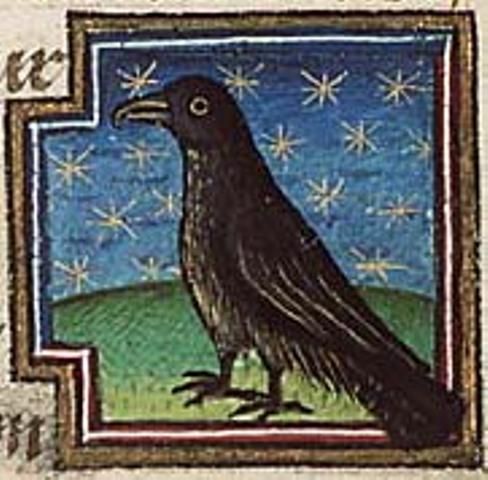















The Sailors' Pillar of Notre Dame
Erected by the Nautae Parisiaci (Seamen of the City of Paris)
In 1711, renovations were in progress on the choir of Notre-Dame de Paris. In the process, a series of stones were found undernieth.
"The monument is thought to have originally consisted of eight stone blocks with a square base placed on top of one another. Two of these belonged together in each case, with the effect that 4 x 4 surfaces for images bacame available. As five of these eight blocks are missing, and only four of thse surfaces are preserved complete, with only the upper part of the other twelve surviving. One of these incomplete surfaces bears the votive inscription rather than an image. According to the inscription the monument was errected during the rule of the emperior Tiberius (14-37 AD)" Maire.
The inscription is as follows according to the CIL:
Tib(erio) CaesareAnd the sides of the rest of the pillar are:
Aug(usto) Iovi Optum[o]
Maxsumo
nautae Parisiaci
publice posierunt(!)
Eurises
Senani U[s]eiloni(?)
Iovis
Tarvos(?) Trigaranus
Volcanus
Esus
[C]ernunnos
Castor
[-]
Smeri[-]os
Fort[una?]
]TVS[
CIL 03026 = ILTG 331 = AE 1959, 0062.
which I have seen reconstructed and translated as "Under the reign of Tiberius, the Parisian sailors raised, with public expenses, this monument to the great Jupiter." This would then date the pillar to nearly a hundred years after Rome had conquered Gaul. As for these "Parisian sailors", we must remember that Paris consisted of the Ile de la Cité in the middle of the Seine, which took its name from the local Gallic tribe. Transportation both of and on the island necessitated a guild of sailors.
The following Roman deities are found in relief on the pillar: Castor and Pollux the Dioscures, Fortuna, Jupiter, Mars, Mercury, Venus, and Vulcan. However, typical of Roman occupation, Gallic gods also appear: Cernunnos, Esus, Tarvos Trigaranos, and Smertios, all of whom are specifically named. As to the possible significance of what each scene depicts, see the w/u on Tarvos Trigaranos.
The significance of the pillar itself--aside from providing us names and images of specific Gallic (and thus Celtic) gods--is that it points to a rather interesting idea. Namely, the typical response of Rome towards the religions of other nations was to incorporate them, to bring them into the greater pantheon. In effect, this tolerance seeks to neutralize opposition to the Roman imperialism. A religion was tolerated, so long as it did not overreach the bounds of Roman taste (see the cults of Attis and Cybele), or act as a political tool (as in the case of the Judeans or the Druids, both of whom were crushed for opposing Roman rule).
In 1844, the pillar became part of the collection of the Musée de Cluny in Paris. It has recently been restored and is on display. It is on the ground floor, in room eight.
Images of the Esus and Bull reliefs can be seen here: Esus
Image of the Cernunnos relief can be seen here: Cernunnos
Most images of the pillar can also be seen here: Le Monde des Celtes NOTE: This site is in French.
SOURCES:
MacCana, Proinsias. Celtic Mythology. NY: Hamlyn Publishing Group, 1973. (This book also contains many of the statues and reliefs of Gaul depicting Celtic gods, such as the Sailor's Pillar, as well as the Gundestrup Cauldron.)
Maier, Berhard. Dictionary of Celtic Religion and Culture. trans. Cyril Edwards. Rochester, NY: Boydell, 1997.
"Pilier des nautes." Musée National du Moyen Ages, Thermes & Hôtel de Cluny.

Back to "S" | Back to JCE
Home
Mary Jones © 2003